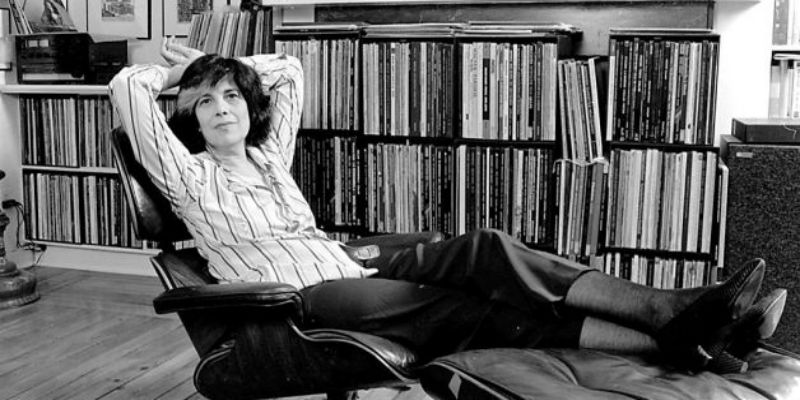






























In 1964 late American writer, filmmaker, teacher, and political activist Susan Sontag wrote her seminal article on camp, simply called ‘Notes On Camp’. Sontag was the first intellectual to explore this cultural phenomenon, crafting a novel theory for it. Until then, camp had remained a cult “sensibility”, as she called it, cutting across several sections of life, from design to films, from fashion to human behaviour, to name but a few. The beauty of the article was that, besides hauling camp out of obscurity, it featured some of Sontag’s style hallmarks: direct prose, the ability to bottle complex concepts with uncluttered, sophisticated turns of phrase, a smart way to deliver cultural theory with the reader in mind.
Sontag was very perceptive when she forwent a classic essay style for a list format, in a way foreshadowing the trend that would go mainstream in the Internet age, fuelling popular websites like Buzzfeed. She justified her choice by explaining that “the form of jottings, rather than an essay (with its claim to a linear, consecutive argument), seemed more appropriate for getting down something of this particular fugitive sensibility. It’s embarrassing to be solemn and treatise-like about Camp. One runs the risk of having, oneself, produced a very inferior piece of Camp.” Sontag capitalises “Camp” throughout
It’s not my intention to go through each one of the 58 sketches Sontag made in her essay, although some of them are worth mentioning. Sontag rightly observed that Camp is the ultimate manifestation of the idea of life as theatre. Perhaps for that reason it is closely associated with gay culture and its self-conscious embracing of drama, humour and artifice. Camp has been used by gay people as a strategy of resistance, a weapon to undermine prejudice, to laugh in the face of adversity. Camp is empowering; it’s a way of turning the tables on an oppressive system. It is a form of intelligent taste, even when it falls into the “deliberate bad taste” category.

The flickering lights of Camp
When it comes to ‘deliberate bad taste’, one of the filmmakers that should be honoured for his services to screen camp is John Waters. Waters has been a force to be reckoned with since he launched his infamous film career with Multiple Maniacs (1970) and Pink Flamingos (1972) – the former has just been rereleased in the UK (click here for our review and more information). Since then, his films have benefited from higher production values, but Waters manages to retain the camp edge and sleaze that are two of his trademarks. Cecil B. Demented (2000) is a particularly good example of how his camp strategy is used to poke fun at serious art, with a riotous and almost apocalyptic grand finale.
Camp can also be read as a kind of Esperanto understood by any person anywhere in the world. Camp neutralises pomposity and adds a touch of cozy familiarity to an image, object or act because its parlance is universal. The scene in the movie Priscilla, the Queen of the Desert (Stephan Elliott, 1994), when the aboriginals join the drag act to the sound of the gay anthem ‘I Will Survive’, illustrates this point. When the aboriginals join the lip-syncing act, all cultural differences are erased, and only the most profoundly human qualities remain.
Another camp favourite, which is back in the spotlight thanks to the TV series Feud, is the classic film Whatever Happened To Baby Jane (Robert Aldrich, 1962). The TV series illustrates the classic feud between Joan Crawford and Bette Davis. Both actresses are firmly established in the gay camp icon pantheon and the film is a kind of a battle of camp mammoths, each one trying to outcamp each other in this claustrophobic tale of sibling rivalry, faded glory and nostalgic isolation.
The cinema of Pedro Almodóvar is also a great destination for screen camp, as the iconic Spanish maverick turns up the volume on the less savory elements of the human psyche and the theatricality of human relations. Films like High Heels (1991), Kika (1993), All About My Mother (1999), and virtually every other film he has made, employ camp as an aesthetic strategy to create the style and mise-en-scène he is known for, abundant with flair and colour.
Paul Morrissey’s films made with Andy Warhol are another great example of camp. Trash (1970), in particular, stands out for the unforgettable performance given by Holly Woodlawn. The transsexual actress’s histrionic and absurd delivery as the frustrated wife of an impotent junkie played by Warhol’s Factory hunk Joe Dalessandro is one of the highlights of camp in the history of cinema.

Among other examples of screen camp worth noting are Muriel’s Wedding (P. J. Hogan, 1994), Barbarella (Roger Vadim, 1968), Some Like It Hot (Billy Wilder, 1959), all Russ Meyer’s films (particularly Faster, Faster, Pussycat, Kill, Kill, from 1965 and pictured at the top), Todd Solondz’s Welcome to the Dollhouse (1995), Bruce LaBruce’s punk porn Hustler White (1996), Cecil B. de Mille epics, Busby Berkeley’s extravagant musicals and many other old movies from the Golden Age of Hollywood, a treasure trove of camp gems.
In this age of extreme opinions, economic and environmental crisis and apocalyptic feelings, Camp can provide a cheerful note amid the doom and gloom. To quote Sontag for the last time, “Camp is a tender feeling”. In this hardened and saturated world, we can all do with a little tenderness to get us through the day.
















